12 Interesting Reindeer Facts For Kids [2024 Updated]
Adored for their majestic horns, reindeer belong to the deer species. They are the largest species in the deer family, generally found in the northern parts of Asia, North America, and Europe. Colder regions are the best homes for Reindeer, including the Arctic Tundra, Canada, Alaska, Scandinavia, and the boreal forests.
In this article, we’re going to take a look at some interesting facts about reindeer, from whether their noses are actually red and how much milk the average reindeer can produce.
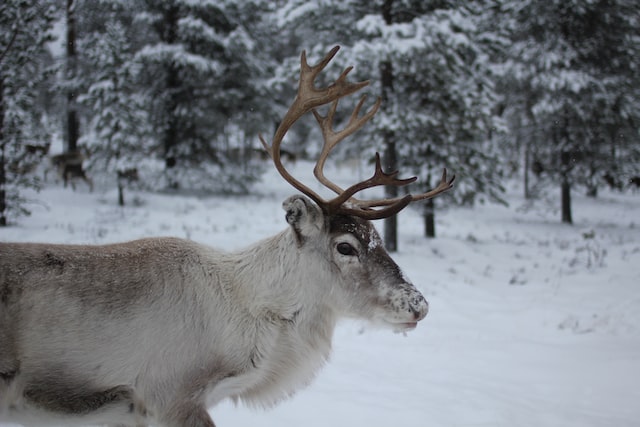
Here are some remarkable reindeer facts for kids that will grab your attention.
- Name: Reindeer
- Scientific Classification: Family – Cervidae, Capreolinae, Odocoileini, Kingdom – Animalia
- Latin Name: Rangifer Tarandus
- Appearance: Reindeer have Grey or brown fur on the body with antlers on head. They have big feet to help walk on smooth lands.
- Size and Weight: Male reindeers are larger as compared to females. Males can grow upto 5.9 to 6.8 feet long while females can grow upto 6.2 feet long. Males weigh upto 529 pounds while females weigh lesser upto 308 pounds.
- Habitat: Reindeer are found in the Arctic Tundra and the boreal forests of Russia, Alaska, Canada, Scandinavia, and Greenland.
- Diet: They are herbivores and rely on mosses, grasses and ferns.
- Life Expectancy: Reindeer can live upto 15 years in the wild and upto 20 years in captivity.
12 Interesting Reindeer facts for kids

Caribou and Reindeer are the same.
Deers, Moose, Elk, and Wapiti, belong to the same family. While the world refers to this animal as a reindeer, North Americans call it Caribou. While there are significant differences, they both refer to the same animal species. The name Caribou refers to reindeer when they
haven’t been domesticated. We generally differentiate between these creatures based on their region and habitat. There are also noticeable differences in their physical characteristics concerning size and fur.
Visibility to Ultraviolet Rays
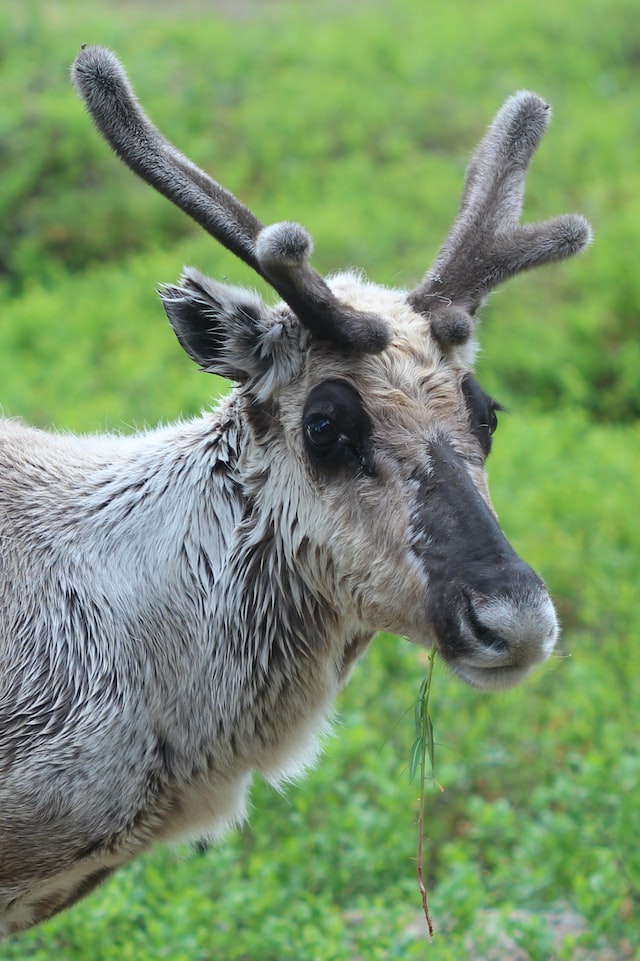
Reindeer can see UV rays! This makes them capable hunters as they can spot predators from far away. UV rays can cause snow blindness or sunburn in humans, but reindeer can look at UV rays without harming their eyes. This feature protects their eyes and helps them spot camouflaged animals in snowy areas.
Their eyes change color.
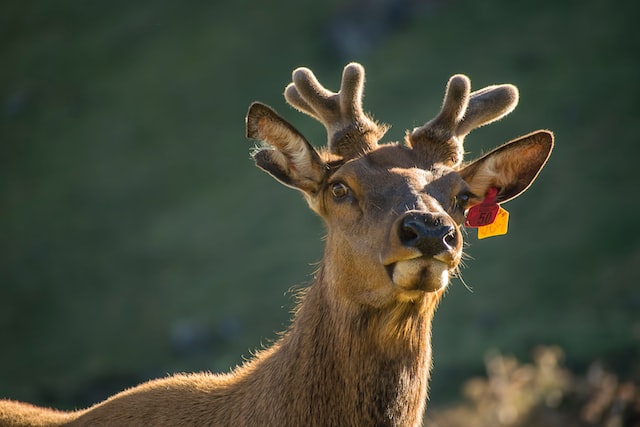
Reindeer have different eye colors in winters and summers. Their eyes are generally blue in the winters and yellow during summers because of their dilated pupils. Tapetum Lucidum is a layer found behind the eye’s retina, resulting in the reindeer’s eyes turning blue. The pressure is relieved during summers; hence, their eyes reflect a color ranging from yellow to green.
Both genders grow Antlers.
While males are generally spotted with antlers, female reindeer also grow antlers in certain parts of North America. The male’s antlers are heavier and bigger when compared to the female’s antlers. While female antlers can grow to 20 inches, male antlers can be as large as 51 inches. Adult males drop their antlers during November, whereas females keep them until April and May.
Reindeer eat a vegetarian diet.

Even though Reindeer live in snowy regions of the globe, they are natural herbivores. Reindeers prefer eating leafy greens and mushrooms. During winter, the species depend highly on plants, herbs, grass, shrubs, and lichen (reindeer moss). A Reindeer may also prefer eating apples, carrots, turnip greens, beet greens, Romaine lettuce, or Cabbage. An adult Reindeer can consume around 9 to 18 pounds of vegetation daily. In winters, Reindeer need to scrape the snow using their antlers to eat lichen and fungi. These creatures also use their hooves to dig the snow for food.
They are social creatures.
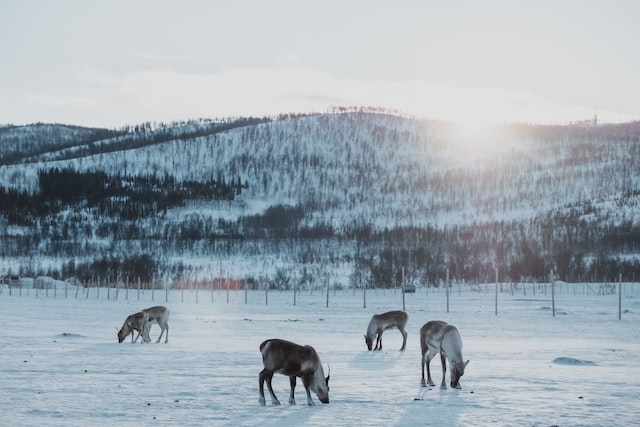
Reindeer are social animals that you will always find in large herds. These species travel, eat and rest together as a group. The herd can include sometimes include hundreds of Reindeer. The herds increase in number during spring, ranging from 50,000 to 500,000 reindeer in snowy regions. They generally migrate toward the peninsula, leading to a decline in their number. This is because reindeer calves are often too young, small, and weak to make the journey, so they sometimes lose their way or die.
Female reindeer live longer.
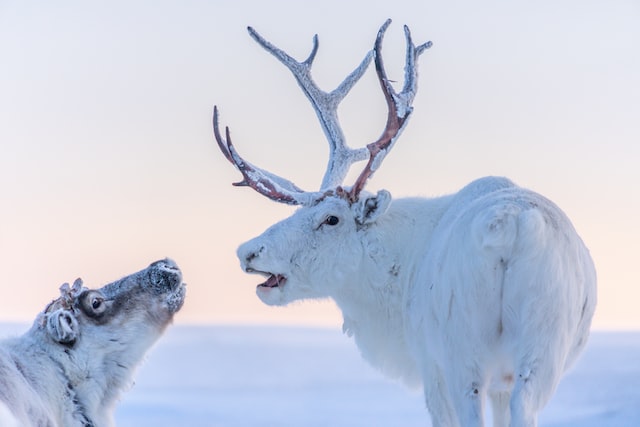
Female reindeer live longer than male reindeer, even after breeding and giving birth. The average female reindeer usually gives birth to one calf at a time. When the mating season ends, male reindeer are more susceptible to predation. This, in turn, leads to the males living a shorter life than the females. While male reindeer generally live up to 12 to 15 years, females for 15 to 18 years. Reindeer living in captivity can live for up to 20 years under the right conditions; these include climate and diet.
Reindeer are great swimmers.
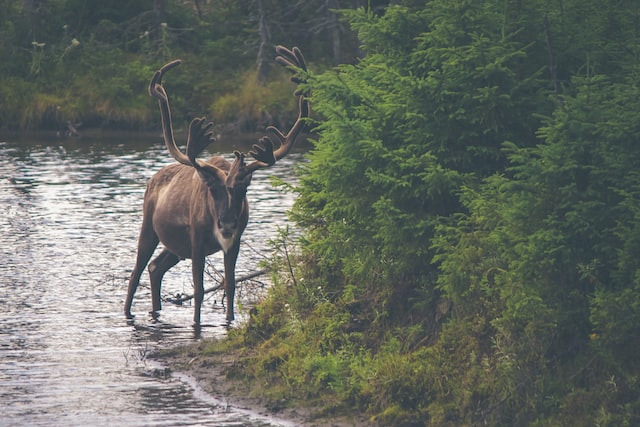
Reindeer are excellent swimmers, even in cold regions with lots of snow. They are strong swimmers because they must cross large bodies of water annually to migrate. When swimming, their thick coats provide insulation and keep them warm in frigid conditions and cold water. The average reindeer can swim six miles per hour!
Humans can domesticate Reindeer.
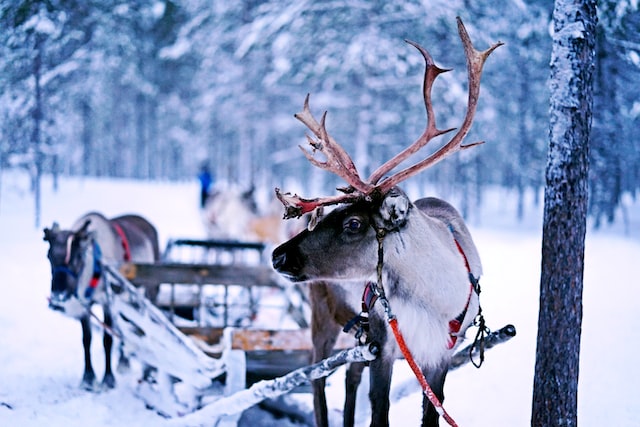
When compared to caribous, reindeer are smaller and easier to domesticate. Researchers believe that humans started domesticating reindeer in the early 11th century to ride them and use them as a transportation method. Reindeer are strong creatures that are fast learners, making it easy for humans to train them. Studies have shown that around nine countries domesticated millions of reindeer. Most domesticated reindeer are used to help with farming.
Newborn reindeer are strong and capable.
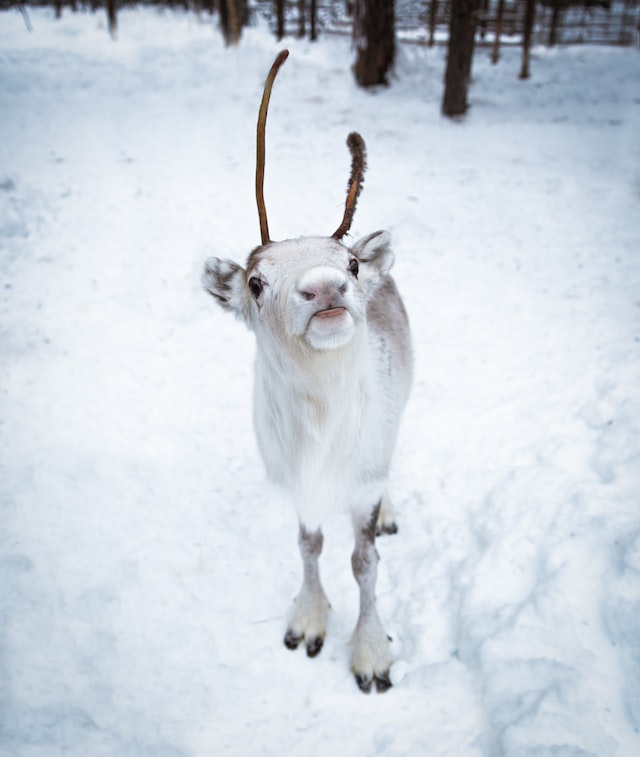
While other animals may take time to grow and stand, newborn reindeer can stand an hour after birth. Mothers may give birth to a maximum of two calves. The newborns are strong, healthy, and can quickly adapt to their mother within six or seven hours. A newborn starts consuming solids along with its mother’s milk within a week. In a day, a newborn can outrun a human. They grow fast and double their weight within two weeks. A calf can weigh up to 17.5 pounds at birth. These newborns start growing antlers within two years and can weigh up to 165 pounds in their first year.
Some reindeer have red noses.
Some reindeer have red noses, much like the fictional character, Rudolph. Their noses have a red hue because they are packed with blood vessels. These blood vessels help reindeer regulate their body temperature in extreme weather conditions.
Reindeer produce rich milk.
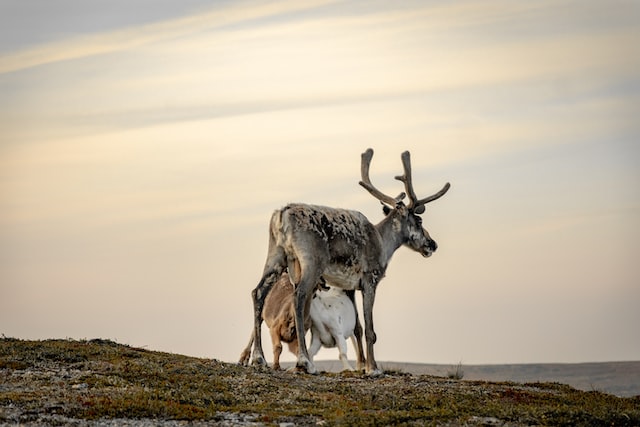
Reindeer produce healthy and rich milk that is good for health but is also rare and expensive worldwide. This is because the average reindeer produces only two cups of milk daily. The milk that terrestrial animals produce is some of the most nutritious milk in the world. It contains 10% protein and 22% butterfat compared to cow milk, which has only 4% of butterfat. Some Nordic countries make a type of sweet cheese from reindeer milk called renost.
Conclusion
Reindeer are fascinating creatures with unique characteristics and features. They are strong, intelligent, and capable and have helped contribute to human life in numerous ways. In this article, we walked you through a list of 12 facts about these beautiful animals! If you ever wondered if reindeer were mythical creatures from a Christmas carol, our article has helped explain that that isn’t true, and that they are present and alive. Check out other interesting facts on our website.
